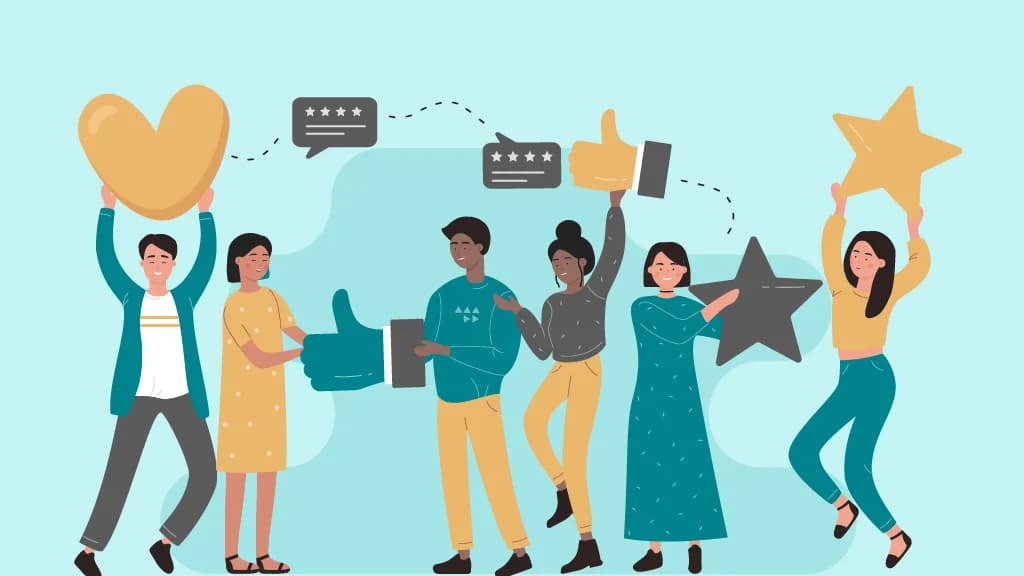
Team AdvantageClub.ai
September 9, 2025

A simple “thank you” is unique, but workers need more when they do well. That’s where employee recognition badges come in. These employee digital badges make employee recognition accurate, actionable, and more visible.
Workplace badges ensure that employees are proud of themselves for either achieving a significant goal or being consistent at work. In addition, the badges demonstrate that the company believes in its people more than the company talks about it.
7 Digital Ideas for Employee Recognition Badges
- Milestone Achievement Badges
These workplace recognition badges help celebrate major career milestones such as work anniversaries, project successes, or service years. Digital employee reward badges help in the recognition of milestones by fostering loyalty and supporting long-term commitment. - Performance Excellence Badges
The company should award the employees with performance excellence badges when employees continuously excel in challenging work scenarios. These performance-driven workplace badges promise a high-performance culture and motivate others to improve. - Innovation & Creativity Badges
These badges are awarded to employees who bring fresh ideas, enhance work processes, or drive innovation. Businesses can use digital badges for employees to recognize employee accomplishments and stay competitive. - Team Player & Collaboration Badges
Team player and collaboration badges honor employees who support other coworkers and help the team succeed. Employee recognition badges improve teamwork, collaboration at the office, and productivity. - Upskilling & Learning Badges
Businesses can grow when they celebrate employees who finish training programs, obtain certifications, or acquire new skills. Digital badges that reward skills and achievements encourage employees towards their career growth. - Wellness & Engagement Badges
Promoting employees who participate in wellness programs, company activities, or volunteer work helps to create a healthier, more engaged workforce. These employee digital badges ensure a culture of well-being where the team as a whole grows. - Culture & Values Badges
These badges are given to the employees who act on company values, promote ethical leadership, and participate in a high-performing workplace culture. Employee recognition badges assist in building a sense of collective vision.
Examples of Digital Employee Recognition Badge Systems
AdvantageClub.ai supports employee appreciation through gamification. The platform rewards employees with digital badges upon accomplishments, peer appreciation, and milestones. Employees can earn recognition badges, monitor progress, and even be rewarded with something material, making appreciation engaging. This act fosters a culture that appreciates every contribution, building motivation and encouragement.
How AdvantageClub.ai Enhances Digital Recognition
AdvantageClub.ai takes employee recognition badges to the next level with features that make appreciation more robust and interactive:
- Custom Badge Design: Develop in-house badges that highlight company values and celebrate personal achievements.
- Peer-to-Peer Acknowledgment: Make your employees appreciate their coworkers, creating a culture of appreciation.
- HRMS Integration: Easily integrate digital skill and achievement recognition badges with current HR systems.
- Performance Incentives: Incorporate game-like aspects and rewards to encourage.
- Real-Time Analytics: Monitor recognition badge usage with real-time insights to refine engagement strategies.
Benefits of Digital Employee Recognition Badges
- Increased Motivation and Engagement
You can make employees feel special, which directly relates to increased job satisfaction. The simplest way to do this is by instant recognition through employee recognition badges. Publicly acknowledging achievements improves a sense of accomplishment and promotes ongoing excellence. - Encouraging Continuous Learning
Digital badges for recognition of collaboration and achievements encourage employees to take courses, get certified, and learn new skills, creating a learning and professional development culture. - Strengthening Workplace Culture
By associating workplace badges with organizational values, businesses reassert their identity. Recognition invites inclusivity, appreciation, and a more engaged workforce. - Easy Tracking and Integration
Appreciation badges for employees can be easily integrated with HR software, allowing leaders to monitor progress and achievement. This data-driven method enhances transparency and workforce planning.
Are Digital Recognition Badges Worth It?
- Employee Perspectives: Employees appreciate recognition badges because they immediately offer appreciation. It is usually more important for remote and hybrid workers so everyone feels included in workplace recognition.
- Business Impact: Employee digital badges can boost satisfaction, improve productivity, and reduce turnover. Valued employees remain engaged, which translates to a more committed workforce.
- Addressing Limitations: To be more effective, workplace badges must return to actual accomplishments. Ensuring badges reflect real achievements makes recognition meaningful and prevents it from becoming just another routine gesture.
Challenges & Disadvantages of Digital Badges
- Lack of Perceived Value
Employees will not be serious about them if recognition badges are issued too often or for small accomplishments. If companies want them to be successful, work badges should represent significant achievements. - Overuse and Meaning Dilution
When employees are awarded digital badges without specific standards, they become useless. Employees who do not believe they have earned the badges can lose respect for them. - Limited Engagement Without Proper Implementation
Digital badges should be visible, rewarding, and part of company culture to be actually effective. Otherwise, employees will take it for granted.
Solutions
- Make Recognition Meaningful and Measurable
Give employees reward badges for significant achievements to make them valuable. This approach makes employees energetic and appreciative. - Preserve Value Through Exclusivity
Restrict the awarding of workplace badges to preserve their exclusivity. Fewer, difficult-earned badges are more valuable at recognition. - Enhance Engagement with Integrated Recognition
To make the system more interesting and motivational, use digital badges for the employees and combine them with rewards, leaderboards, and peer recognition.
Digital Badges vs. Digital Certificates: Key Differences
Both certificates and digital badges are used to reward achievement, but in different ways. Digital badges are similar to little rewards for accomplishments or skills. They can be placed online, and it is easy for others to know what a person has accomplished. These badges still encourage employees by rewarding their efforts daily.
On the other hand, digital certificates are given upon completion of an entire course or training program. They are more official and usually necessitated for employment or education. While badges are nice for marking small accomplishments, certificates confirm that an individual has completed a substantial learning program. Such awareness enables organizations to employ both appropriately to foster learning and achievement.
Aspects | Digital Badges | Digital Certificate |
Purpose | Show a specific skill or small achievement. | Prove that someone finished a full course or program. |
Design | A small image with details about the achievement. | A formal document with all the necessary information. |
Shareability | Easy to share on social media and online profiles. | Usually sharefd in professional settings or added to resumes. |
Verification | Often includes a link so others can check if it’s real. | May need someone to manually check and confirm. |
Elevating Recognition with Digital Badges
Using digital badges for recognition and achievements is an efficient and easy method of showing appreciation and encouraging employees. When applied in moderation and alignment with the company culture, the badges promote engagement. They also improve learning and establish a culture of valued and appreciated employees.





